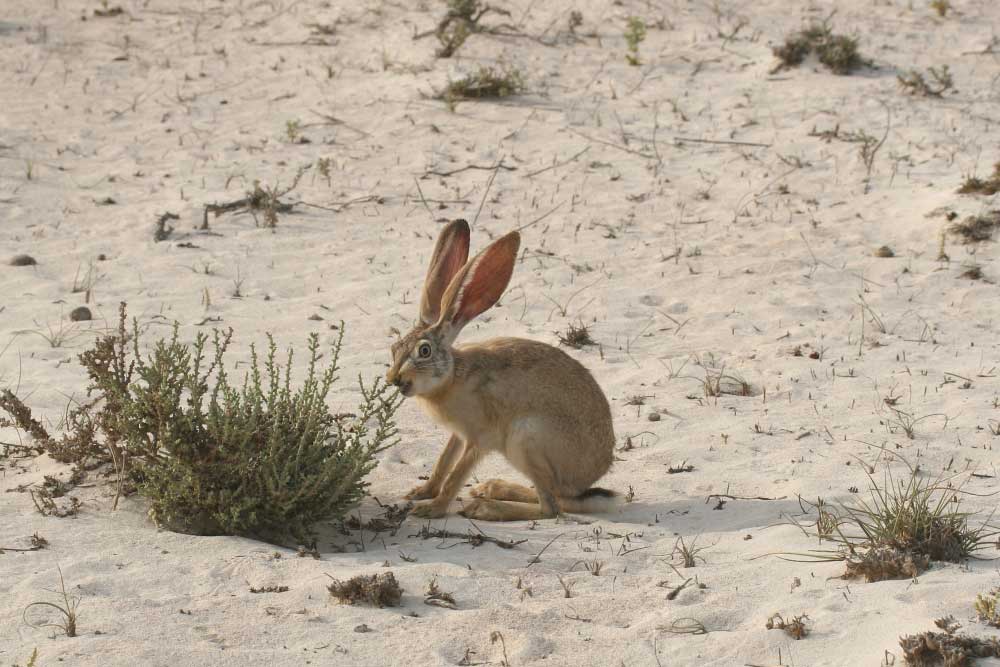
Name: Desert Hare, Arabian Hare, Cape Hare
Common name: Desert Hare, Arabian Hare, Cape Hare
Local name: Al Arnab
Scientific name: Lepus capensis
Nature Reserves: Irkaya
Size: 33
Habitat:
Desert Hares are widely distributed in most habitats with some vegetation or scrub, including gravel and sandy plains. They are generally active at night, and spend the day motionless in shallows scrapes under bushes. They are rarely seen in the open, unless flushed.
Habits:
They feed on shrubs and grasses and are independent of water, obtaining moisture from their food.
When flushed, they run at high speed following a zigzag course and can turn abruptly at speed. They are normally solitary except during breeding. Females can produce young all year round with a peak in the winter season. The litter size is usually between one and three. Gestation is 42 days and young hares, known as leverets, are born fully furred with their eyes open and able to walk after one day of birth.
Distribution:
In Qatar, Desert Hares are widespread, especially on the coast and sand plains and dunes. They are subject to overhunting, but regulations issued by the Department of Wildlife Conservation and Development limit hunting to designated seasons.
Description:
Length: 33-52 cm, Tail length: 3-8 cm, Weight: 0.8-1.2 kg
The Desert Hare is small, but has exceptionally large ears. Their colour varies from light brown to pale grey, with white undersides. The large ears assist cooling by dissipating body heat through many superficial blood vessels. Tufts of soft hair grow between the pads on its feet and help him to move on soft sand. The eyes are large and golden, and hares have excellent vision.







